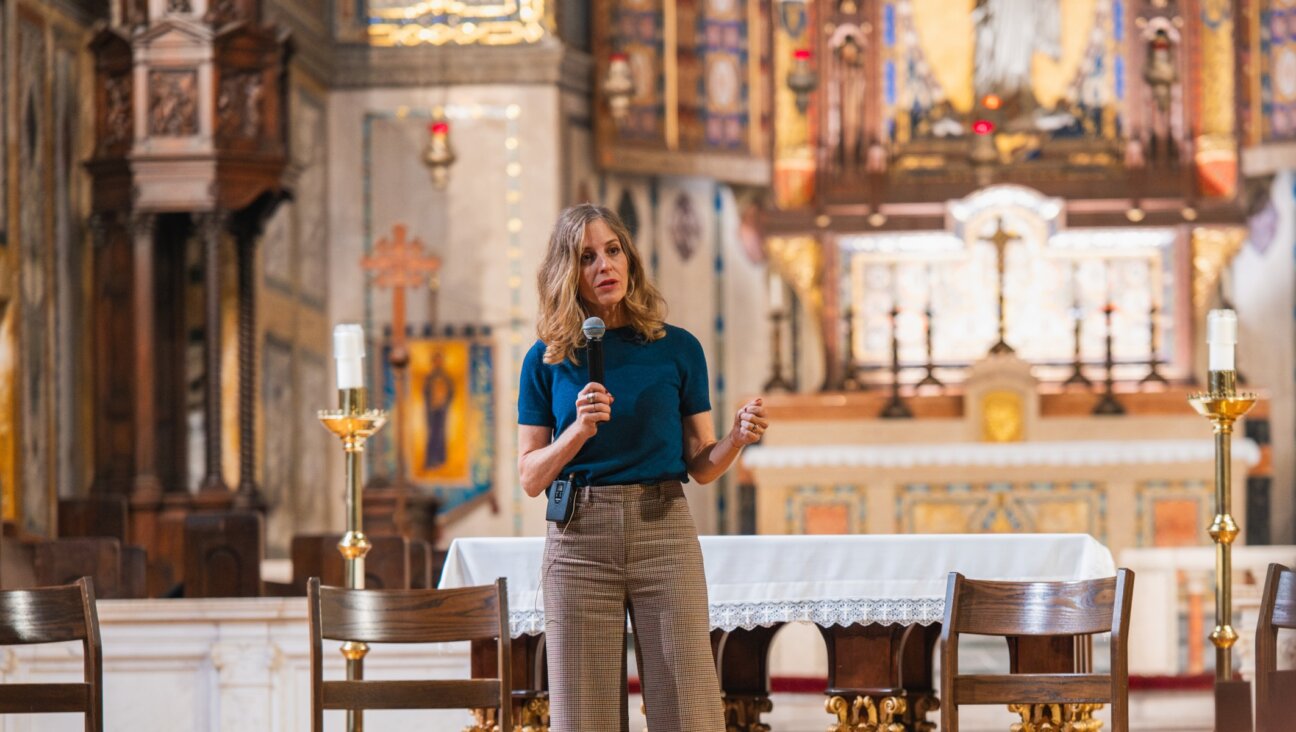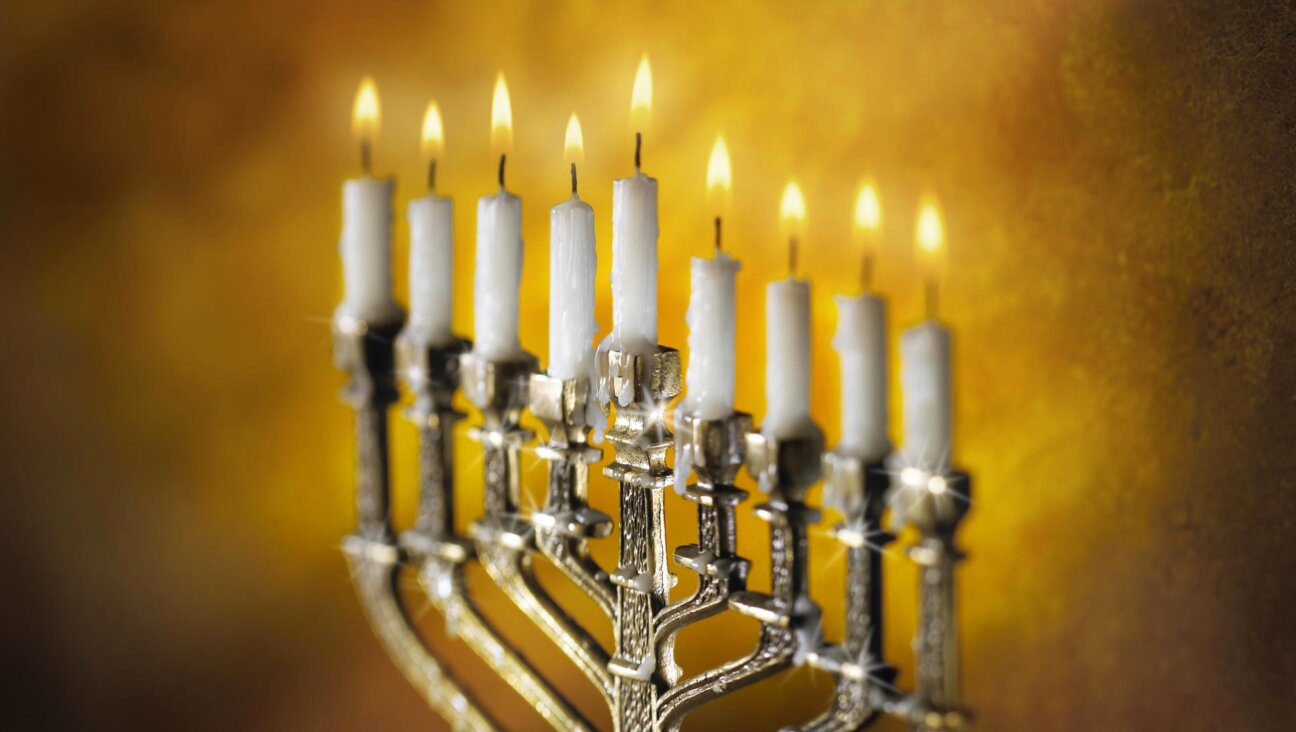JCCs Fall by the Wayside in L.A.
LOS ANGELES — A ramshackle brick building in the bohemian Silver Lake neighborhood here still carries the name Jewish Community Center, but it is only because of some desperate local teamwork and a very non-Jewish hero.
A year ago, the Silverlake JCC’s property was on the market and ready to go to the highest bidder. Members of the center say they pleaded with the Jewish Federation of Greater Los Angeles to help save the buildings and the child care center inside. In the end, though, it was an Episcopal bishop — a former pro-football player who grew up playing basketball at the center — who stepped in and provided the necessary funds to let the building remain as a JCC. The Episcopal diocese paid 49% of the downpayment — $350,000 — and Jewish residents of the neighborhood raised the rest. Today the center is run almost entirely by volunteers, with local Jews contributing legal hours and computing expertise.
The unlikely survival of the Silverlake Independent JCC was one of the last episodes in the implosion of L.A.’s JCC system. Since 2002, three of the city’s seven JCCs have been sold off. Silver Lake and one other center only remained as JCCs because of last-minute donors who stepped in after the federation declined to help purchase the buildings. Last month, the association that previously held together all the JCCs together went out of existence.
Los Angeles now has a quarter as many JCCs as Chicago, with rough-ly twice the Jewish population (more than 520,000 in L.A.). The New York metropolitan area, with 1.4 million Jews, has 26 JCCs compared with the four now in Los Angeles.
On one level, this dearth is very much a story of Los Angeles — where, in the Jewish community at least, a certain hardscrabble frontier ethic still prevails. Nationally JCCs are doing well, with $500 million being spent last year on new construction for such centers. In L.A., though, it only has been the newest, savviest institutional operations that have won donors in the Jewish community, while more traditional institutions such as the JCCs and their single-largest source of funding — the Jewish federation — have struggled.
“The JCC situation has shown the good and bad of Los Angeles Jewry,” said David Myers, professor of Jewish history at University of California, Los Angeles. Myers is currently working on a research project on the history of Jews in the city. “It’s really hard to constitute a core and have a strong leadership that steps in at times of crisis. But you’ve also got the creative ingenuity to solve problems.”
When the dissolution of Los Angeles’s JCCs began, in 2001, it was seen widely as a result of an acute financial crunch at the JCC Association of Greater Los Angeles, which ran the city’s seven JCCs as well as a camp and a children’s museum. In October 2001, the Jewish federation announced that it was owed $1.6 million by the JCC association for overdue payroll (the federation had been in charge of the JCCs’ payroll and insurance plans). Over the next months, that debt grew even higher because of pension payments that the federation said it was owed by the JCC association.
The director of the JCC association, who had been on the job 90 days when the crisis hit, immediately fired the chief financial officer. Afterward, the JCC association began the process of selling off centers to pay off the debt to the federation. The federation said it could not afford to prop up a JCC system that was hemorrhaging money, though some in the community said the federation showed no interest in helping save the JCC system.
“My opinion was the federation should have just jumped in and said, ‘Wait a minute, let us help you,’ before this spiraled out of control,” said Earl Grenitz, who had been the federation’s treasurer during the crisis.
After the crisis, everyone agrees, both sides treated the other as opponents rather than as team members working to solve a problem.
But the reasons for the financial problems go back further than the disputes in 2001. During the 1990s, the federation slowly cut back its support for the JCCs. At the beginning of the 1990s, $4 million of the JCC association’s $14 million annual budget was coming from the federation. By 1997, when a new JCC opened in the suburban San Fernando Valley, the annual amount had been cut almost $1 million, while the costs associated with running the JCCs had risen.
The JCC association had donated the property for the new West Valley JCC to the federation, and the federation put its own offices in there as well. But rather than increasing the allocation with the opening of a new JCC, the federation took about $900,000 of the old allocation to pay rent for the new facility, lowering the allocation further.
Many people close to the JCC system said it was made clear to them even before the crisis hit that the JCCs were not a priority for the federation system.
“The federation felt that JCCs were not as important as other constituent agencies. That was just a values judgment,” said Michael Kaminsky, current president of another surviving center, the Westside JCC (see related article, below). “We had to say, ‘We have to stop depending on the federation. We need to figure out how to grow ourselves.’ JCCs didn’t do that for 10 years.”
John Fishel, who has been president of the federation throughout the crisis, said that he never gave up on the JCCs. He pointed to the money the federation pumped into the JCCs during the crisis, which kept some of the programs running until a temporary solution could be found. Fishel said that in 2001 alone, the federation made cash advances to the JCCs totaling $2.6 million. “If we didn’t believe that JCCs were important, you probably wouldn’t have any JCCs left in Los Angeles,” he said.
But Fishel acknowledged that he did not have a great deal of confidence in the model on which the JCCs were running in the 1990s, when many of the smaller JCCs had been pared down to child care and programs for the elderly. He also said many of the large synagogues in L.A. had provided the services of a JCC, including pools and fitness facilities.
For the federation, however, there was also a larger issue driving the cutbacks. Over the past two decades, the federation’s annual campaign has stagnated at about $40 million — less than the amount raised in Chicago, and just slightly more than in Boston and Cleveland. All these cities have Jewish populations much smaller than L.A.’s. New York’s federation raised $130 million in 2004, the last year for which the organization filed tax forms.
“The traditions of giving out here are not what they are on the East Coast,” Fishel said. “This is just the way it is. This is a boom-bust place.”
With all the Jews in Hollywood, there is plenty of money to be raised — it just wasn’t being raised by the federation. The Skirball Cultural Center — a Jewish center in the city — raised more money than the New York federation last year. But the L.A. federation’s campaign has barely increased. In 1994 the campaign raised $41 million. If that had merely kept pace with inflation during the booming 1990s, the annual campaign now would be raising $52 million. But in 2004, the federation raised $45 million.
Since the crisis hit, the federation has continued to give funding to the individual surviving JCCs, though the total is lower than what it was before the crisis. The president of the Valley Cities JCC, which recently found an anonymous donor to buy the center, said it was the federation’s cash infusions that helped his organization make it through the crisis years. Last year, the center received $400,000 from the federation.
The bulk of remaining federation funding for JCCs, however, has gone to the JCC in the San Fernando Valley that was founded in the 1990s, and that shares a campus with the federation. Last year, the center received $1.28 million.
This has left some of the other older JCCs feeling neglected — particularly the Silverlake independent JCC, which now receives no funding from the federation.
The L.A. federation’s Fishel said that the Silverlake center never formally applied for funding — but JCC board members said they spent three years asking for any help they could get from the federation. They are now struggling with the leaky roof and non-functional air conditioning that they inherited, as well as $12,000 monthly mortgage payments.
As a result of the help of the Episcopal diocese, soon there will be church services in the Silverlake JCC on Sundays.
The JCC in Silver Lake is seen by many in the Jewish community as a case study for why Los Angeles still needs a robust JCC system. Silver Lake is a community near Hollywood in which there are many young unaffiliated Jews and relatively few religious congregations or outlets for them to enter the Jewish community.
Randy Myers, the former president of the JCC association, was a completely unaffiliated Jew when she enrolled her son in preschool at the Silverlake JCC. Through the community there, in addition to her work with the JCC association, she joined a synagogue and had an adult bat mitzvah.
“In a city this dispersed, the thing that created my sense of community was the JCCs,” Myers said. “It is absolutely vital in this community. I wish things had gone differently.”
A message from our Publisher & CEO Rachel Fishman Feddersen

I hope you appreciated this article. Before you go, I’d like to ask you to please support the Forward’s award-winning, nonprofit journalism during this critical time.
We’ve set a goal to raise $260,000 by December 31. That’s an ambitious goal, but one that will give us the resources we need to invest in the high quality news, opinion, analysis and cultural coverage that isn’t available anywhere else.
If you feel inspired to make an impact, now is the time to give something back. Join us as a member at your most generous level.
— Rachel Fishman Feddersen, Publisher and CEO























